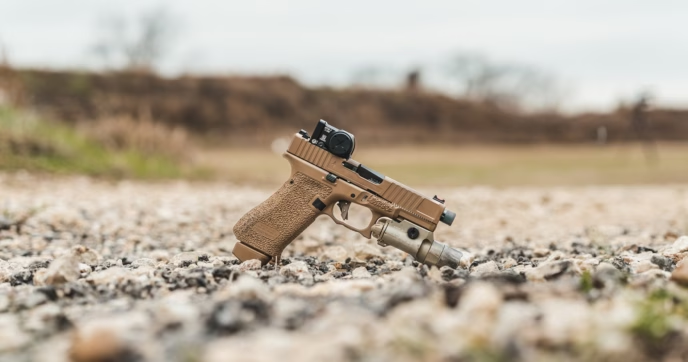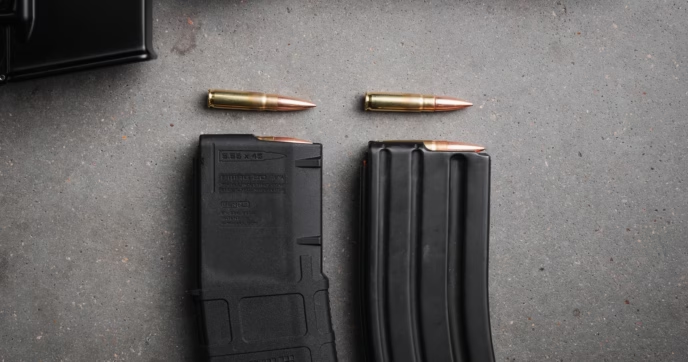Ammo calibers have evolved incredibly over the last 100 years, to the point where we now have a vast array of calibers available for different applications, optimized for their purpose.
Depending on your purpose for your firearm, different calibers will work toward your benefit. For example, if you’re looking to shoot at long ranges, you may want to opt for a 6.5 Creedmoor instead of a .22lr.
Regardless of what your purpose is for your firearm, it’s interesting to see that there are still two main types of ammunition: centerfire and rimfire. What is the main difference between centerfire and rimfire ammunition? Each has its own purpose and distinct advantages for their purpose. We’re going to break it down, rimfire vs. centerfire:
What is Rimfire Ammunition?
A rimfire cartridge is characterized by not having a separate primer, but a primer that is built into the rim of the cartridge. Essentially, the primer powder is loaded into the base of the cartridge and spun at insanely high speeds to compress all the powder into the rim of the cartridge. Instead of a firing pin impacting a primer set into the center of the cartridge, it impacts the rim of the cartridge setting off the primer compound and beginning the chain reaction that propels the round out of the barrel. Rimfire cartridges can be used on multiple platforms as well, including pistols, AR-15 platform rifles, and bolt action rifles. While it is similar in looks compared to centerfire cartridges, they differ greatly from each other, and they have their own purpose.
Rimfire calibers are much smaller than their centerfire counterparts, and because of the way their primers work, they wouldn’t be reliable if they were sized up to larger ones. Fortunately, this works in their benefit as rimfire cartridges are perfect for smaller calibers like .22LR, .17HMR, and .22 Magnum.
These calibers are perfect for rimfire cartridges. Not only are they more reliable because of the size, but they are less expensive for manufacturers to create, and as a result, cheaper for the buyer. If you want to shoot over 1000 rounds at the range on a sunny afternoon, it is much more cost effective to buy 1000 rounds of .22LR instead of 5.56.
If you’re wanting a cheaper alternative to everyday target shooting, investing in a good rimfire rifle is an inexpensive way to have fun at the range. Rimfire shooting has gotten so popular that there are even competitions and matches specifically for rimfire shooting. There are many clubs and associations that focus on rimfire shooting; some biathlons, for example, require the use of .22 caliber rifles. There is an incredible amount of versatility with this type of ammunition. Some revolvers come chambered in rimfire rounds, making them a great range gun or trainer pistol.
But what can you do with rimfire besides plinking targets? Rimfire rounds are actually much more versatile than one would assume. While they are great for simple target shooting, they are very effective for hunting small game. Game like squirrels, rabbits, and groundhogs can all be hunted with rimfire cartridges; even pests like raccoons and opossums can be effectively hunted with these cartridges.
If you want to process and cook the meat of small game, rimfire has many clear benefits when compared to centerfire. Many hunters hunt for the animal’s meat if they aren’t eliminating pests. For example, if you were to hunt a rabbit with higher velocity .223/5.56 hunting round, it would destroy most of the meat. In contrast, a .22lr has less velocity and smaller overall size, but it can still be effectively used to hunt while preserving most of the meat on the animal.
With the uses and versatility of rimfire ammunition, it’s no wonder that they are as popular as they are; we even have a blog all about why people are shooting rimfire! But how do they compare to centerfire ammunition?
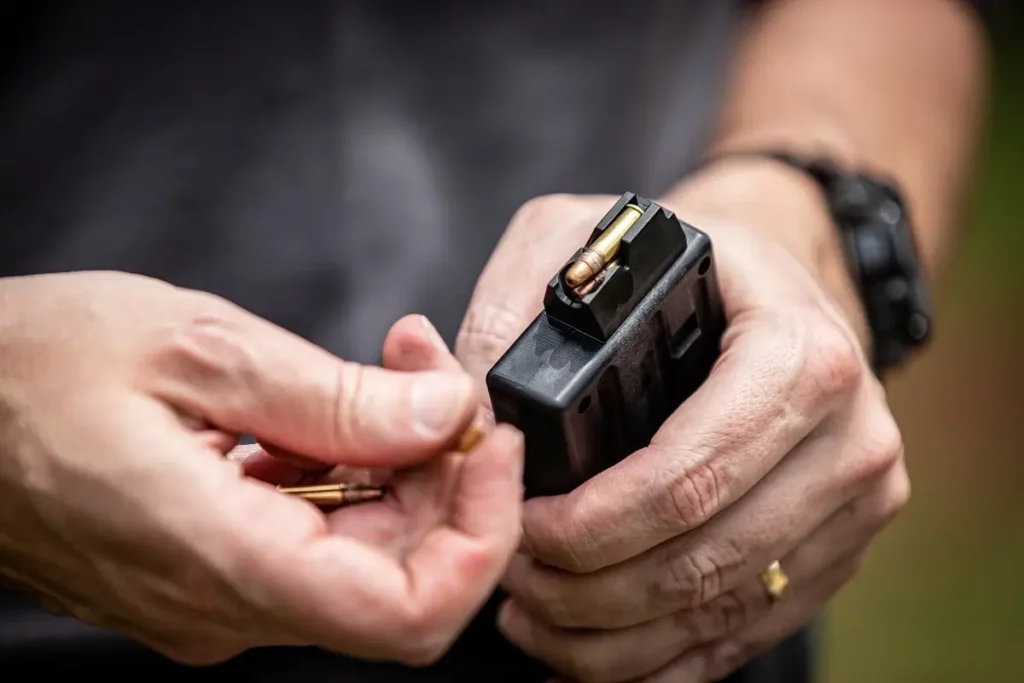

What is Centerfire Ammunition?
Whereas rimfire ammunition doesn’t have a separate primer, centerfire ammo does. Instead of having a rimmed primer, centerfire ammunition has a separate primer that ignites the powder. Because of this, centerfire ammunition is reloadable, so long as the casing is brass or nickel-plated, it can be reloaded with new components.
Because of their construction, centerfire cartridges can be made in much larger calibers than rimfire ones. For example, rimfire calibers top out around the .22 caliber size, though historically there have been larger calibers. Centerfire cartridges can be as big as .50 caliber (1/2 inch in diameter) or even bigger. This makes them better for self-defense guns and long-range precision. Since the projectiles are larger, there is more variety in what can be done to them. They can have expanding hollow point bullets for self-defense, bullets shaped for increased accuracy at longer ranges, and other kinds of ammunition for different purposes.
Centerfire cartridges also allow for a wider range of calibers. Smaller caliber ammunition like .380ACP, 9mm Luger, and .45ACP, are great handgun cartridges. Much bigger cartridges are used for rifles like .223/5.56, .308, 6.5 Creedmoor, and 7.62×39, just to name a few. Each has their own capabilities, making some better for defense and others better for distance or other purposes.
It’s worth noting that rifle platforms such as the AR-15, while commonly chambered in .223/5.56, can be chambered in a wide variety of centerfire cartridges and even rimfire cartridges. You can easily swap the upper on your .223/5.56 AR-15 to one chambered in .22LR.
While centerfire rounds are more expensive than rimfire ones, they are more effective for defense and have more overall versatility. With centerfire rifle ammunition, depending on the caliber, you can shoot at farther distances more accurately. The ammunition has the ability to be much more powerful as well, since larger centerfire ammunition can hold more powder and safely reach higher pressures.
One of the aspects in which centerfire rounds excel is hunting. While you can hunt smaller games more effectively with rimfire ammunition, it is illegal to hunt large game like deer and elk with most rimfire cartridges. This makes centerfire cartridges your only option for hunting large game; rimfire calibers wouldn’t be as effective or as humane in the first place. Larger animals need to be hunted with larger calibers to have a more humane and effective hunt. Cartridges such as .308, .223/5.56, and 6.5 Creedmoor, for example, are popular centerfire rounds for hunting because of their better terminal ballistics.
Side-note: if you’re a hunter it’s important to know how each caliber stacks up against the other, check out our other article on .308 vs. 6.5 Creedmoor after reading this one.
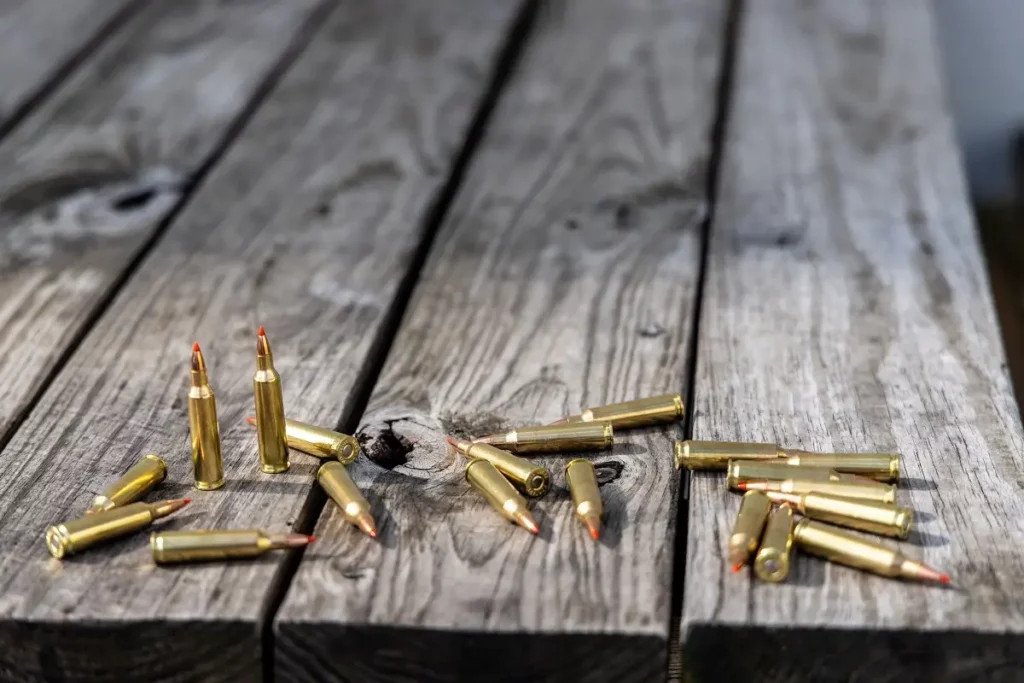

Which One Should You Choose?
The type of firearm you purchase depends on what your surroundings, needs, and wants call for. If you know you are going to be hunting small game, pests, or just plinking, get a rimfire rifle. If not, centerfire might be the best option for you.
While the above is true, each type of firearm has its own distinct advantages for different applications. Instead of searching for one “do all” gun, prioritize your needs and get 2-3 specialized firearms for your needs.
For instance, some gun owners only own 2 or 3 guns at a time. They typically own a handgun for self-defense and everyday carry, a rifle/shotgun for home defense, and sometimes a third gun for recreation. With a wide variety of calibers available, it can be confusing to know how they all compare, especially for defense. It’s important to know how each pistol caliber compares to the other. Check out our guide on pistol calibers after reading this blog.
While this isn’t the case for everyone, it is difficult to pick just one firearm when different guns have different purposes. If you think about it, if there was just one “do all” gun, there wouldn’t be the vast assortment available like there is today.
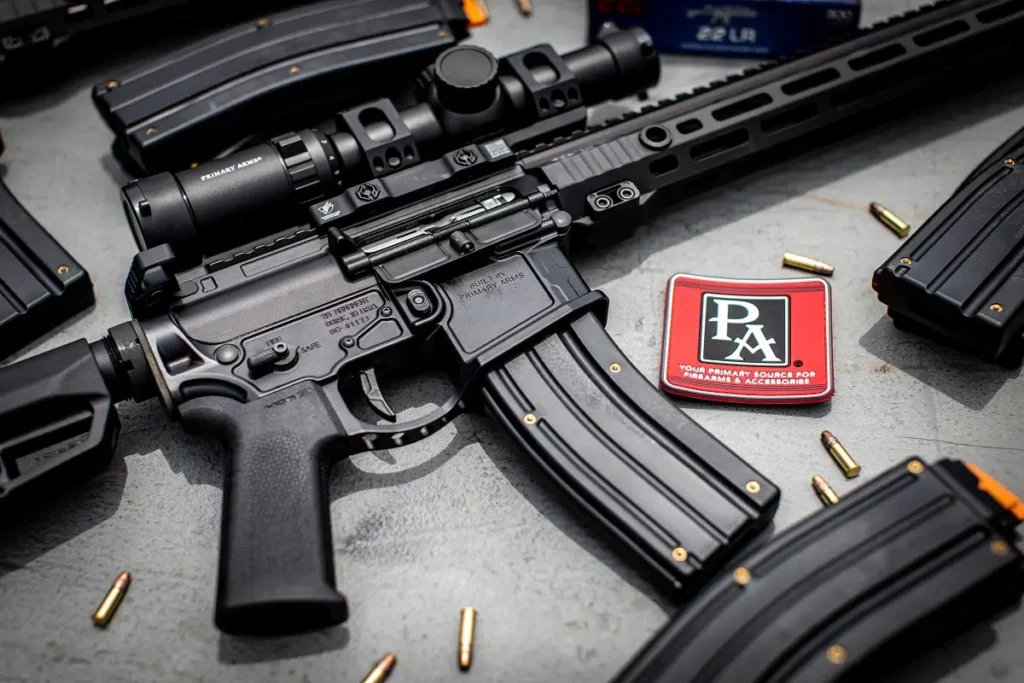
Hunting
Depending on the type and size of game you intend to hunt, you can only use certain calibers and ammo types. We mentioned before that small game like squirrels and rabbits can be effectively hunted with smaller rimfire calibers, but it’s illegal to hunt large game with rimfire calibers in most states. If you intend on hunting with a rimfire caliber, you are relegated to hunting small game only. You can’t step up to hunting anything larger unless you get a rifle chambered in a larger centerfire caliber like .223 or .308.
The difference in hunting with these calibers is vast. For instance, larger centerfire calibers have higher pressures and higher velocities, making the bullets travel faster and further than rimfire calibers. .22LR, for example, has an effective range of 150 yards. While it can travel farther depending on the bullet and powder load, it is quite short compared to .308 cartridges with effective ranges over 500 yards. Depending on the experience you have, you can shoot farther than the effective range but keep in mind it can be unethical to take shots at such a distance. For most beginners, this is a good benchmark to follow. In most field conditions, hunters will usually have shots at a distance from 20 to 300 yards; this will be different depending on where you live, so take this into consideration when making your decision.
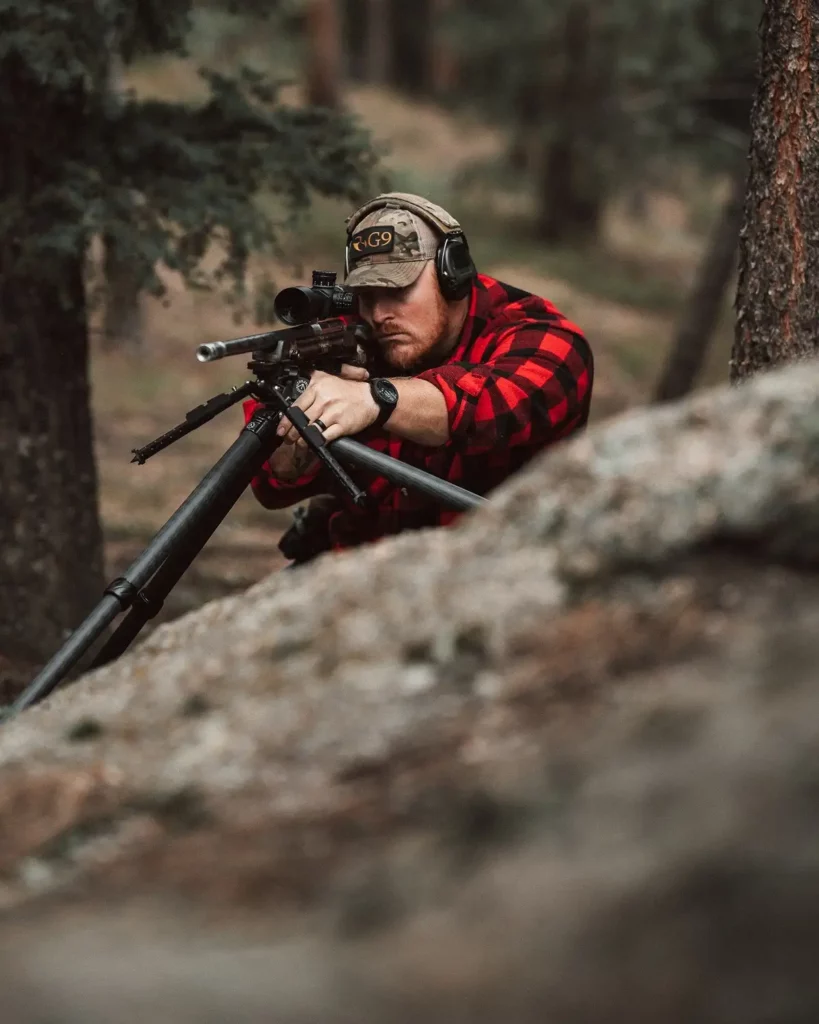

Research
Just like it’s crucial to take your needs and wants into determining what cartridge you should go with, it’s important to do your own research on the subject. You’ve already made successful progress by reading this article, but consulting with experts at your local shooting range is an excellent way to learn more about what could work best for you from enthusiasts.
Most gun ranges offer beginner courses that can be relatively inexpensive. These are a great way to meet with gun experts to learn from and ask questions to help narrow down what set up will work best for you.
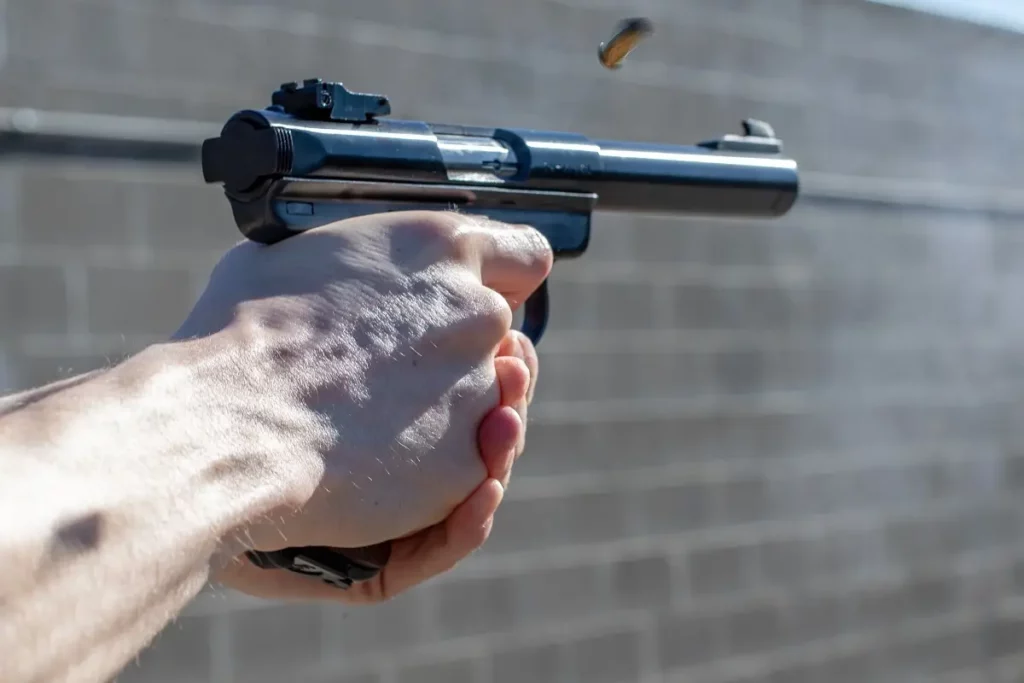
Conclusion
Both rimfire and centerfire cartridges have their pros and cons when compared to each other. They both do well when used for the purpose they’re optimized for.
For a cheap alternative to standard centerfire cartridges, rimfire cartridges are inexpensive, fun to shoot, and great for small game hunting. If you’re looking to shoot at longer distances or hunt big game during their seasons, centerfire rounds are likely your best option.
Regardless of which type you end up choosing, it’s important to do your own research and think about what your firearm’s purpose is going to be so you can make an informed decision and find the best fit for you.
Now, you’re ready to decide which is best for you. Always remember to stay safe, keep training, and never stop learning.


